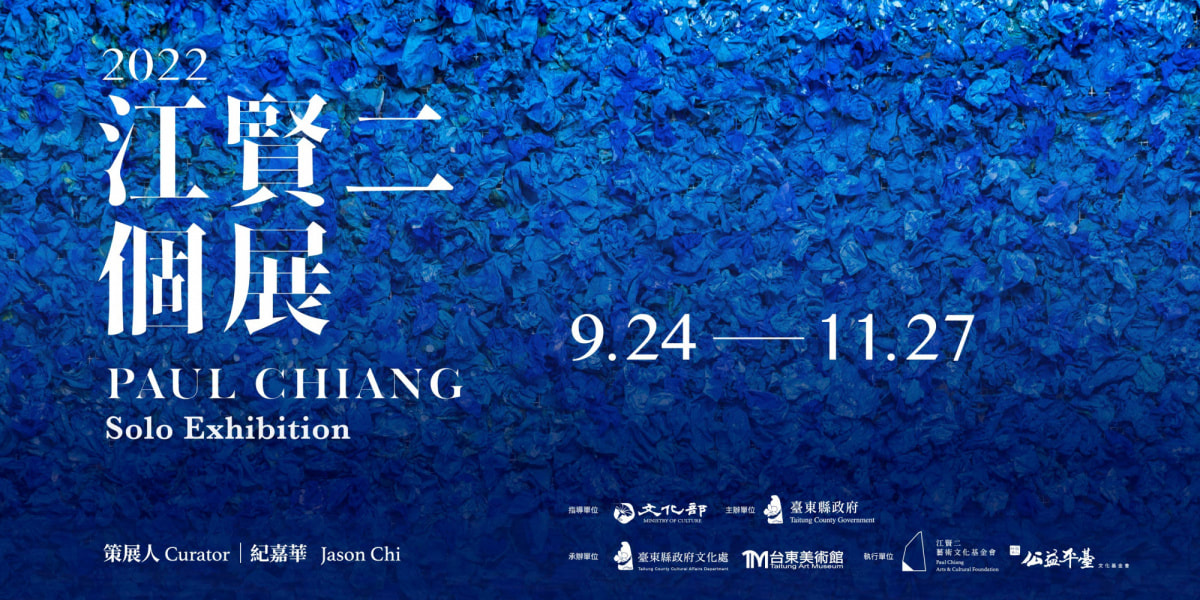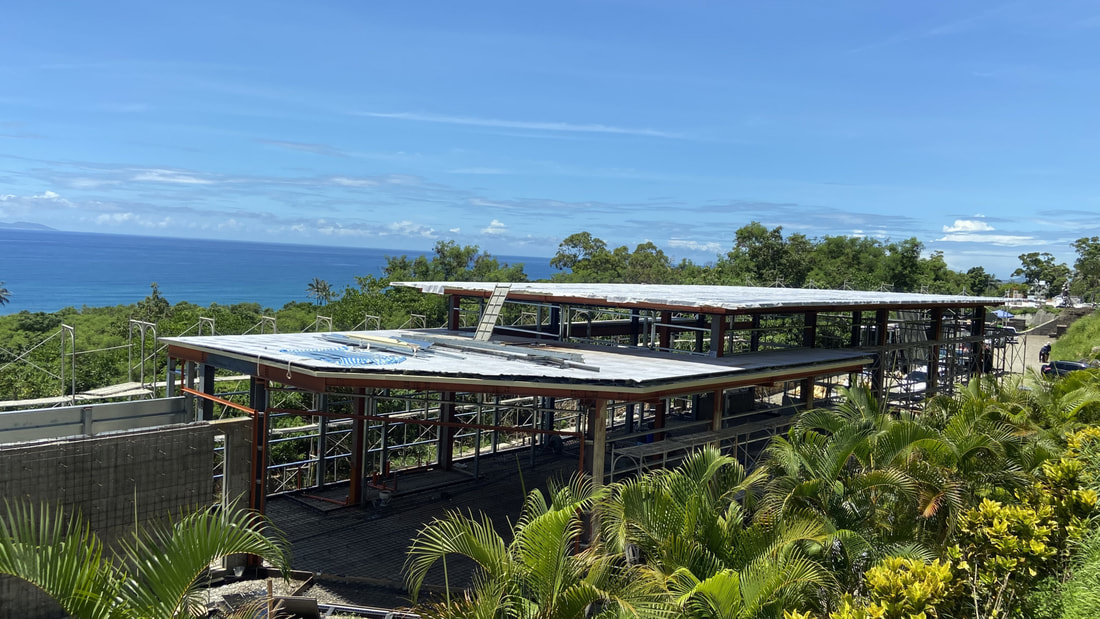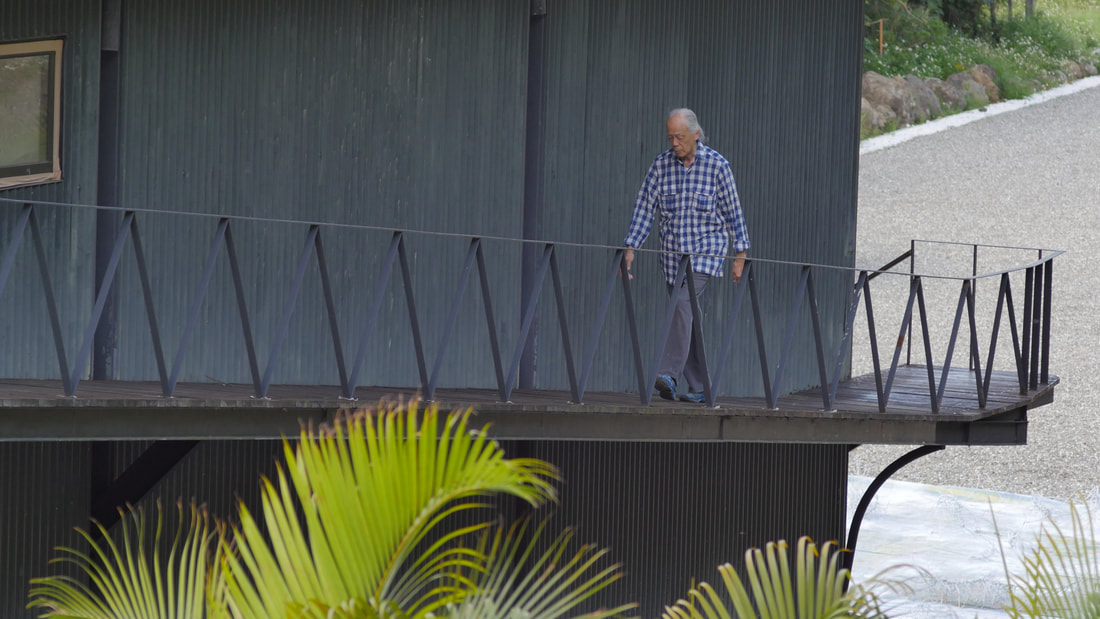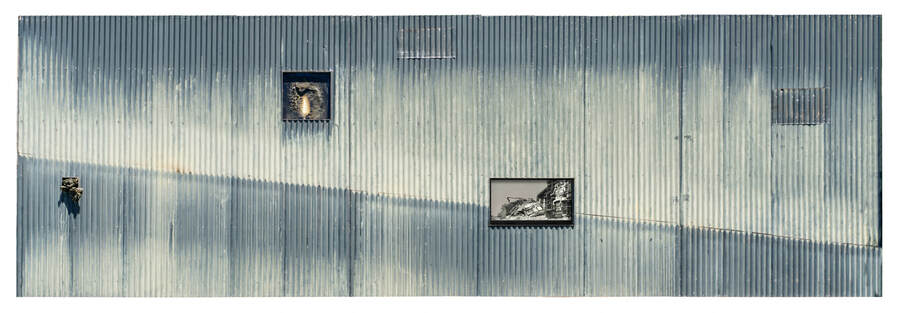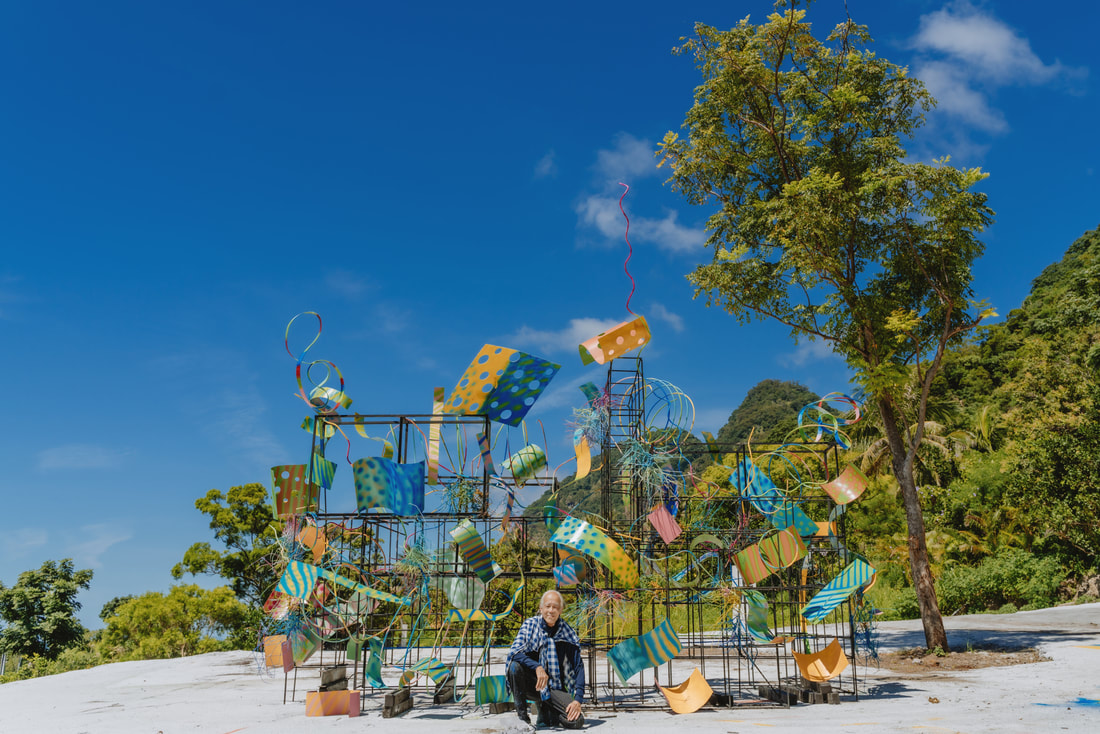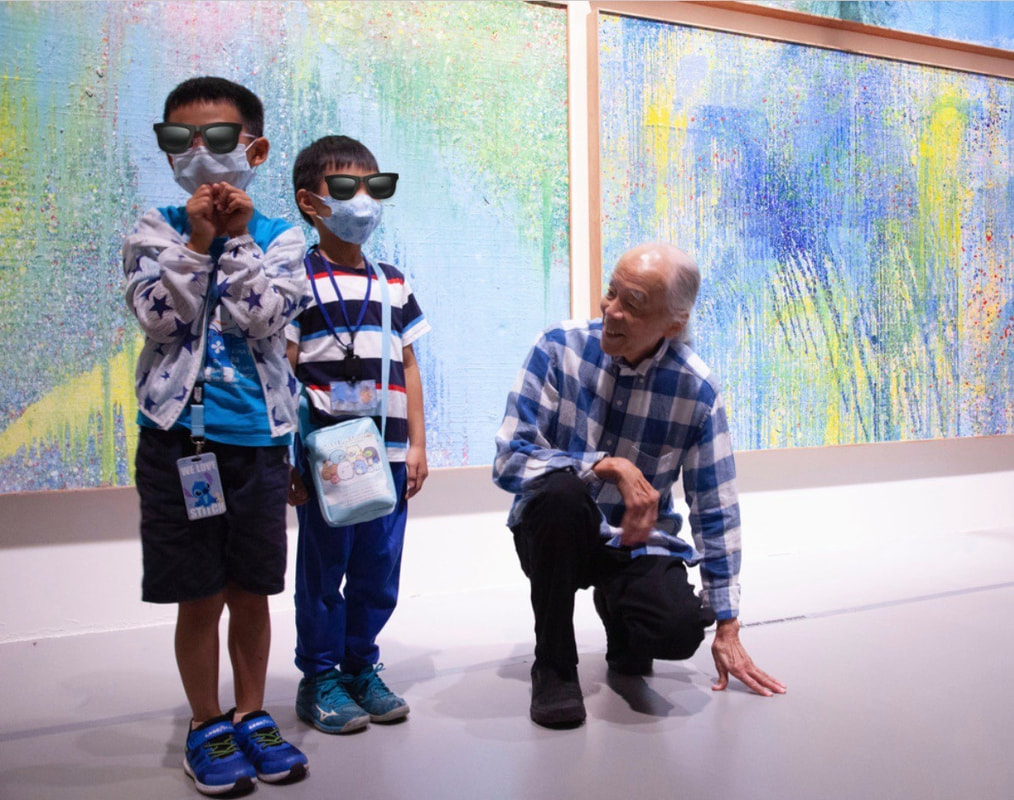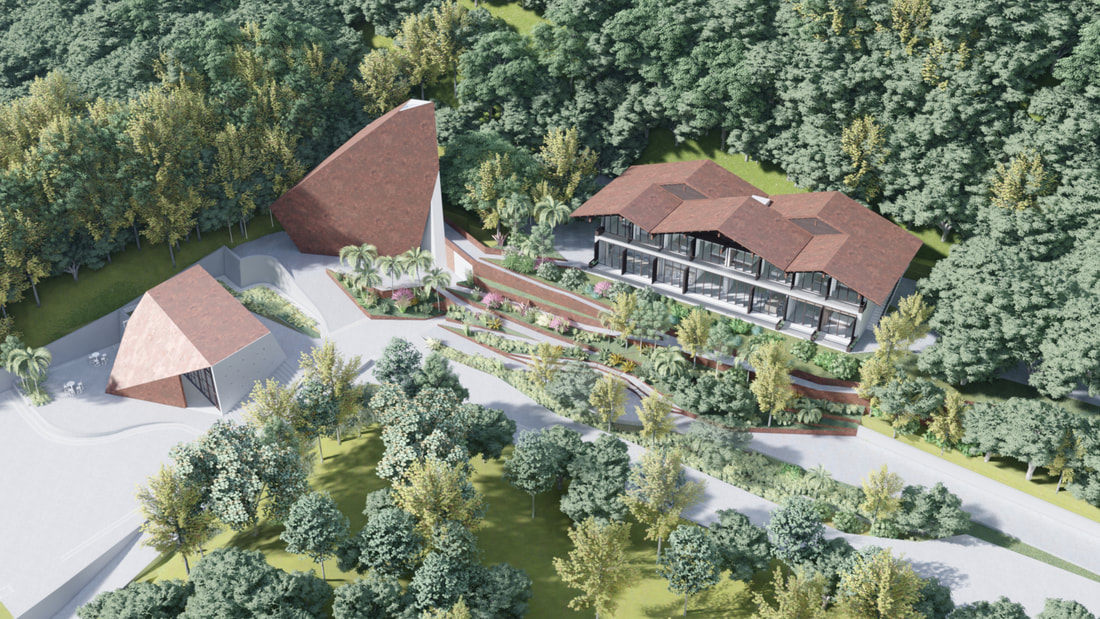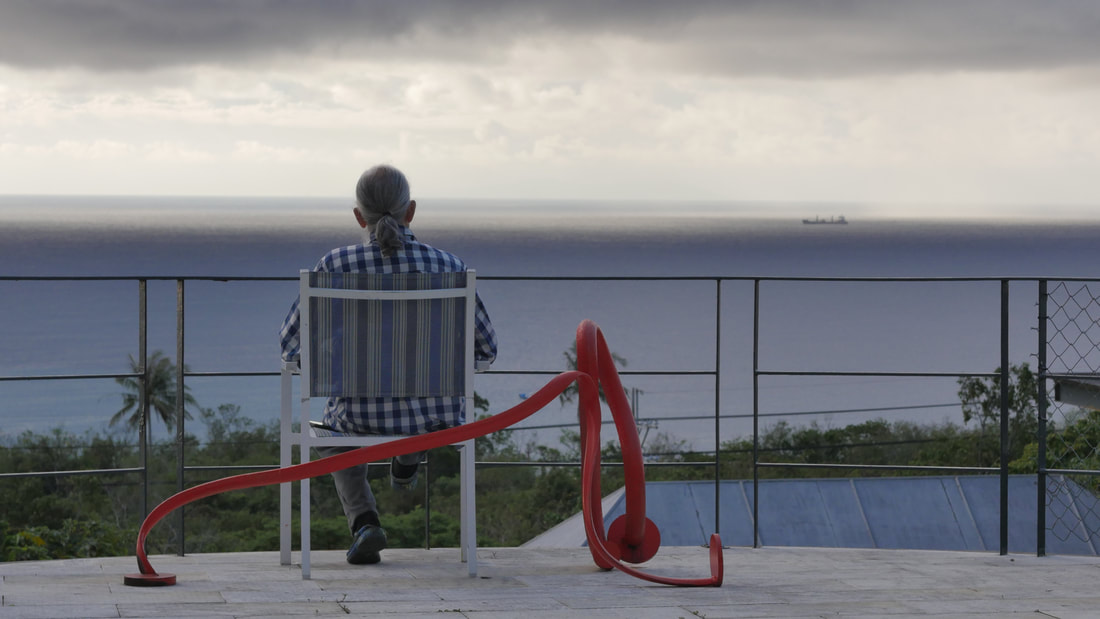Perish by Paul Chiang
April 2022, the film crew of Insularis Creative arrived at Paul Chiang’s Jinzun studio. Before leaving for the studio, crew members imagined the construction site of the Paul Chiang Art Center adjacent to his temporary outdoor studio to be bounded by dust and noise. They wondered how an artist could create under the harsh condition, but what they did not expect was that each day, Chiang walks the site as part of his morning ritual to observe the waste surrounding the site. Chiang gave waste materials such as iron mesh, cement blocks, and corrugated iron a new life through his latest Perish series. 24th September 2022, the series will be revealed publicly for the first time at the “Paul Chiang: Solo Exhibition” at Taitung Art Museum.
“For an artist, it is most challenging to subvert oneself.” said Chiang. Chiang has undertaken this challenge throughout his entire career. His subversion is apparent in works such as Notre Dame de Paris and Transfigured Night which were painted in dark and grey hues to now vibrant colours as seen in the Pisilian series; even his studio once dark is now filled with light. “At the exhibition, I hope visitors will be able to appreciate the creative transition in my works. Though the form of expression has changed, the message I wish to convey remains constant. In my youth I was not able to achieve some of the methods I do now.” said Chiang. 90% of Chiang’s works produced in 2022 are three-dimensional which include sculptures.
“For an artist, it is most challenging to subvert oneself.” said Chiang. Chiang has undertaken this challenge throughout his entire career. His subversion is apparent in works such as Notre Dame de Paris and Transfigured Night which were painted in dark and grey hues to now vibrant colours as seen in the Pisilian series; even his studio once dark is now filled with light. “At the exhibition, I hope visitors will be able to appreciate the creative transition in my works. Though the form of expression has changed, the message I wish to convey remains constant. In my youth I was not able to achieve some of the methods I do now.” said Chiang. 90% of Chiang’s works produced in 2022 are three-dimensional which include sculptures.
With his newborn freedom in creativity, Chiang charters uncharted paths
“I would be very pleased if I were placed in a factory – whether ceramics, glass or any factory. Every morning before I enter the studio at 5:00am, I take a walk around the construction site. It is a moment for me to discover beauty.” said Chiang. Chiang believes that an artist’s job is not only to create beauty, but to discover it.
“Freedom – in the last two years, I gained great freedom in my creative work, freedom gave me the prowess to express myself using new materials.” said Chiang. Adjacent to his residence and the construction site is his temporary outdoor studio where one will find him at every dawn. “Each day, I aspire for breakthrough, and I attempt something new.” said Chiang. While people still discuss the colours and light depicted in his works, with a change of mind, Chiang has already moved forward into a new creative era.
“I would be very pleased if I were placed in a factory – whether ceramics, glass or any factory. Every morning before I enter the studio at 5:00am, I take a walk around the construction site. It is a moment for me to discover beauty.” said Chiang. Chiang believes that an artist’s job is not only to create beauty, but to discover it.
“Freedom – in the last two years, I gained great freedom in my creative work, freedom gave me the prowess to express myself using new materials.” said Chiang. Adjacent to his residence and the construction site is his temporary outdoor studio where one will find him at every dawn. “Each day, I aspire for breakthrough, and I attempt something new.” said Chiang. While people still discuss the colours and light depicted in his works, with a change of mind, Chiang has already moved forward into a new creative era.
Art contributed by wind, rain, and stairs
A large piece of corrugated iron from Chiang’s demolished studio stands upright at the construction site. Its many years of sun exposure created a shadow of the stairs that once reflected upon it. A material frequently used in the structures of Taiwan, this particular piece was one that protected Chiang from Taitung’s changeable weather conditions of wind, storm, and sun. When seeing it at the site, Chiang immediately took to it and decided to repurpose it.
The corrugated iron piece has become part of Chiang’s Perish series. In this series, Chiang expresses the anguish he feels for the Russia-Ukraine war yet his hope for peace. The series shows clearly yet another breakthrough in Chiang’s works. To achieve this requires the aesthetic maturity of an artist. “This piece of corrugated iron is beautiful in its simplicity. It is a piece that I cannot replicate even if I intended to.” said Chiang.
A large piece of corrugated iron from Chiang’s demolished studio stands upright at the construction site. Its many years of sun exposure created a shadow of the stairs that once reflected upon it. A material frequently used in the structures of Taiwan, this particular piece was one that protected Chiang from Taitung’s changeable weather conditions of wind, storm, and sun. When seeing it at the site, Chiang immediately took to it and decided to repurpose it.
The corrugated iron piece has become part of Chiang’s Perish series. In this series, Chiang expresses the anguish he feels for the Russia-Ukraine war yet his hope for peace. The series shows clearly yet another breakthrough in Chiang’s works. To achieve this requires the aesthetic maturity of an artist. “This piece of corrugated iron is beautiful in its simplicity. It is a piece that I cannot replicate even if I intended to.” said Chiang.
Henry
Henry, one of Chiang’s more recent works, expresses his mischievousness. It borrows the idea of LEGO and uses iron frames to create connecting cubes. On the surface of the cubes are items made of iron placed at random points. Chiang’s grandson, Henry, loves playing with LEGO. Bricks and half completed models are found scattered everywhere in his home. The imagination and creativity of a child is boundless, and the interlocking bricks allow limitless possibilities. The piece, named after Chiang’s grandson, is a connection between grandfather and grandson, a pleasant collaboration.
Henry, one of Chiang’s more recent works, expresses his mischievousness. It borrows the idea of LEGO and uses iron frames to create connecting cubes. On the surface of the cubes are items made of iron placed at random points. Chiang’s grandson, Henry, loves playing with LEGO. Bricks and half completed models are found scattered everywhere in his home. The imagination and creativity of a child is boundless, and the interlocking bricks allow limitless possibilities. The piece, named after Chiang’s grandson, is a connection between grandfather and grandson, a pleasant collaboration.
Paul Chiang Art Center: Chiang’s greatest work
While living in East Hampton, New York 30 years ago in the 1980s, Chiang first had the dream to open his studio, which was on a five-acre grassland and potato field, to the community. East Hampton was quiet and far from the city. It was a place for city dwellers to spend their summer holidays, and for artists to find creative inspiration. “My wish is for visitors to experience the same inspiration that nature has given me. As an artist, this is the smallest contribution I can give to the society.” said Chiang. 2019 was the year the construction of the Paul Chiang Art Center began. Chiang’s old studio became a construction site to build the art center of his dreams. The project is estimated to be completed by the summer of 2024 and open to the public.
“I feel aesthetics is essential in our society.” said Chiang. This is why each time that Chiang sees parents bring their young children to his exhibition, he will kneel down to talk with the children and listen to their thinking. “The children won’t necessarily become artists, but going to art exhibitions and concerts can bring lot to their lives.”
While living in East Hampton, New York 30 years ago in the 1980s, Chiang first had the dream to open his studio, which was on a five-acre grassland and potato field, to the community. East Hampton was quiet and far from the city. It was a place for city dwellers to spend their summer holidays, and for artists to find creative inspiration. “My wish is for visitors to experience the same inspiration that nature has given me. As an artist, this is the smallest contribution I can give to the society.” said Chiang. 2019 was the year the construction of the Paul Chiang Art Center began. Chiang’s old studio became a construction site to build the art center of his dreams. The project is estimated to be completed by the summer of 2024 and open to the public.
“I feel aesthetics is essential in our society.” said Chiang. This is why each time that Chiang sees parents bring their young children to his exhibition, he will kneel down to talk with the children and listen to their thinking. “The children won’t necessarily become artists, but going to art exhibitions and concerts can bring lot to their lives.”
Chiang is passionate about sharing art. Over the last few years, he has worked with several young artists in different fields of arts from fashion design to music. Chiang offers his works as their working material or inspiration. The art center will also serve as a platform that nurtures artist collaboration inviting both domestic and international artists from different fields to stay at the art center’s artist guest house. Chiang said, “With the view of the Pacific Ocean and the natural surrounding, it is a space that cultivates inspiration.”
One of the exhibition buildings of the art center is inspired entirely by a rock-like sculpture Chiang had created years prior. When looking from afar, it resembles a rock embedded on the Taitung mountains. The wall of the building will be made from fair-faced concrete and rusty weathering steel which allows the structure to blend naturally into the mountains. Architect of the Paul Chiang Art Center Michael Lin said, “Chiang’s sculptures that inspired the buildings of the art center already has spaciality. He doesn’t need the help of an architect to reform the design of the building. The role of the architect in this case is to help create a cultural platform that harmonizes the natural environment of Taitung and the spirit of Chiang’s works.” The height of the exhibition building is 16 meters. Light will be projected from the tip of the building similar to a cathedral. Works exhibited will mainly come from Chiang’s Notre Dame de Paris series painted before the Notre-Dame fire. The dim lighting will show the true essence of his works.
After 30 years, Chiang’s vision will finally be realized in Jinzun, Taitung. Chiang often shares that if he did not become an artist, he would become an architect. The Paul Chiang Art Center will be his life’s greatest work.
One of the exhibition buildings of the art center is inspired entirely by a rock-like sculpture Chiang had created years prior. When looking from afar, it resembles a rock embedded on the Taitung mountains. The wall of the building will be made from fair-faced concrete and rusty weathering steel which allows the structure to blend naturally into the mountains. Architect of the Paul Chiang Art Center Michael Lin said, “Chiang’s sculptures that inspired the buildings of the art center already has spaciality. He doesn’t need the help of an architect to reform the design of the building. The role of the architect in this case is to help create a cultural platform that harmonizes the natural environment of Taitung and the spirit of Chiang’s works.” The height of the exhibition building is 16 meters. Light will be projected from the tip of the building similar to a cathedral. Works exhibited will mainly come from Chiang’s Notre Dame de Paris series painted before the Notre-Dame fire. The dim lighting will show the true essence of his works.
After 30 years, Chiang’s vision will finally be realized in Jinzun, Taitung. Chiang often shares that if he did not become an artist, he would become an architect. The Paul Chiang Art Center will be his life’s greatest work.
Chiang, now at the peak of his creativity
Chiang has a daily ritual in Taitung which he calls his “happy hour”. In the evenings before sunset when his work for the day is nearly finished, he will walk to the rooftop balcony of his studio to enjoy the ocean view at sunset. People who are familiar with Chiang will know that Taitung inspired a dramatic shift in his creativity. What is even more surprising is that colour was an element in art that Chiang had the least confidence in. He said, “When I was studying at the National Taiwan Normal University, while I struggled with colours, my peers were able to create beautiful ones. I decided then to focus on using blacks and whites. I put a lot of energy into colour, yet my focus is not on the beauty of the colours but its translucency.” said Chiang. If ever there is an element in art Chiang lacks confidence in, he will work to improve it. Chiang continues perfecting colour testing out different yields of paint and oil, and observing the flow of paint on canvas. The featured painting for the “Paul Chiang: Solo Exhibition” is Sound of Ocean. It is a piece made from blue gradient balls of paper towel. Chiang said, “The shades of blues I have produced goes far beyond what is seen in this work.”
Chiang found freedom in creativity because of his persistent curiosity and pursuit in art. Although abstract art is what he is known for, he prefers not to be labeled as such. “I feel the last few years have been the peak of my creative inspiration, and for this I am grateful.” said Chiang.
Chiang has a daily ritual in Taitung which he calls his “happy hour”. In the evenings before sunset when his work for the day is nearly finished, he will walk to the rooftop balcony of his studio to enjoy the ocean view at sunset. People who are familiar with Chiang will know that Taitung inspired a dramatic shift in his creativity. What is even more surprising is that colour was an element in art that Chiang had the least confidence in. He said, “When I was studying at the National Taiwan Normal University, while I struggled with colours, my peers were able to create beautiful ones. I decided then to focus on using blacks and whites. I put a lot of energy into colour, yet my focus is not on the beauty of the colours but its translucency.” said Chiang. If ever there is an element in art Chiang lacks confidence in, he will work to improve it. Chiang continues perfecting colour testing out different yields of paint and oil, and observing the flow of paint on canvas. The featured painting for the “Paul Chiang: Solo Exhibition” is Sound of Ocean. It is a piece made from blue gradient balls of paper towel. Chiang said, “The shades of blues I have produced goes far beyond what is seen in this work.”
Chiang found freedom in creativity because of his persistent curiosity and pursuit in art. Although abstract art is what he is known for, he prefers not to be labeled as such. “I feel the last few years have been the peak of my creative inspiration, and for this I am grateful.” said Chiang.

